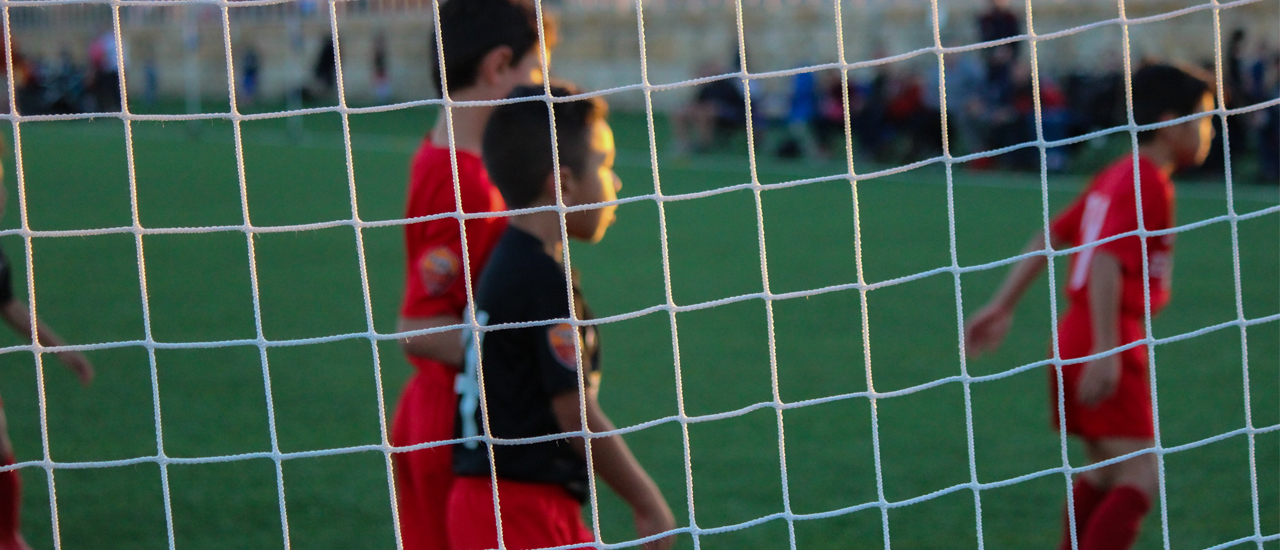
Coaching In Primary School PE – Session Plans
Author: Dan Leaton
Football in PE – Session Plans
When kids head into their PE lesson and they hear it is football, their minds immediately turn to matches and a big one at that, 11 aside, the whole class and why blame them, that is what they see on TV. Jumpers for goalposts, no sidelines, (no rules?). However, we are in the business of developing technique in the less able, and challenging those who are striving ahead. Lets leave the whole class playing a big match for their free play.
Usually, football is used in PE for half a term giving you six or seven weeks to fill kicking balls around hoping you finish the half term with as many balls as you started with (99% of the time this will not happen!). So how do you fill that half term with worthwhile lessons that the kids are going to benefit from? One quick answer is that those ‘bigger’ matches every week are not beneficial.
Let’s start with age groups, KS1 (5-7 year olds) will predominantly be individual or paired work, we want to give each kid as much ball rolling time as possible, let them explore under observation with lots of trial and error. Focus on ball mastery with use of all parts of the foot (inside, outside, sole and laces), with short, competitive games and practices to avoid boredom of repetition, this can be as simple as different coloured cones. Kicking, dribbling and controlling the ball will be your focus without many elements of physicality being brought into play throughout the overview of the lessons.
Heading up to lower KS2 (7-9 year olds) you can start to bring more technical aspects into your lessons exploring different lessons on dribbling, passing, control and possession. With these lessons, you can start off with individual and paired work, so the technical outcomes are continually met and practiced, but you can now also bring in group work (everyone loves a game of rondo!) or when feeling confident in your group; small sided games, with appropriate challenges, into your lessons .
Keep the pitches and the goals small, even removing goalkeepers to encourage every player to play with their feet and you don’t get a kid that gets stuck in goal. Experiment with different amounts per side 3v3, 4v4 or 5v5 works best, increase the numbers and you will soon get kids left out or not touching the ball. Where possible, make the ‘number per side’ appropriate for the technical ability/game understanding of the players involved to either increase their technical output, or give them more decisions to make it a game.
Finally, upper KS2 (9-11 year olds), you can focus on tactical awareness and scenarios (TGfU).
Scenario’s (TGfU) are a fantastic learning tool, are player led games, and require different/tactical decision making for the team to succeed. Some example of scenarios could be 2-0 up with five minutes to play, 1-1 with five minutes to play, 4-0 up and you cannot concede. These bring out all aspects of previous lessons and meet all requirements of the FA Four-Corner model.
Embedding the fact that the lesson it not just having a ‘kickabout’ is important, you can get creative with your lessons at this age as the ability level, understanding, spacial awareness and (hopefully) behaviour/inclusion is higher. As with previous year groups, it is important not to neglect ball mastery (also to improve inclusion), so. make sure time is made for technical practices and challenges.
You can set challenges to kids to work together as a team and conclude on how to play effectively. Creating practices with overloads in attack v defence situations give the kids great experience of more realistic play, decision making and quick transitions for those more technical able/experienced. But be sure to rotate so every gets a fair go at both ‘ends of the pitch.’
Ideally you will have enough equipment for each kid to have a ball, if this is not the case then one ball between three is the least you should be stretching to. Anything more and you will get kids who do not have a ball at their feet, and they will get distracted. The size of the balls should be size 3 for 5-7, size 3 for 7-9 and size 4 for 9-11.
You will only know yourself as the coach/teacher of the kids how well they are progressing, if you need to repeat a lesson, adjust a lesson and do it again then make sure you do. A fantastic method to ensure your session runs well is the FA ‘STEP’ tool (Space, Time, Equipment, People). Do not be afraid to adjust ANY of these as it will lead to a more successful, inclusive and demanding session.
Remember you are there to teach football, not just set up pitches and let the kids play matches, it is a PE lesson and the kids are there to learn. If you
Coaching In Primary School PE – Facilities
do the hard work in weeks one to four, then weeks five and six can be used for more fo those small sided games, but again you are in charge of what the lesson’s topic is. Set appropriate challenges ‘in-game’ for your chosen topic/curriculum. Some may say ‘let the game be the teacher’, but playing a match is a great learning opportunity so be creative with challenges and scenarios to bolster and cement learning, increase engagement and improve all players.
Categories

